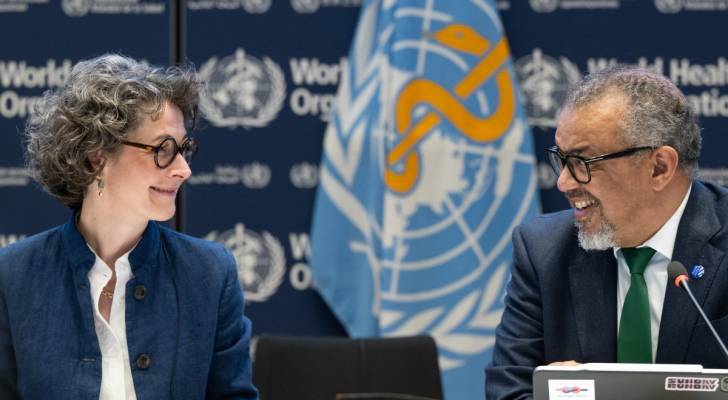Anne-Claire Amprou (L) and Dr. Tedros Adhanom Ghebreyesus during the Pandemic Agreement (Credit: WHO/AFP)
WHO adopts new pandemic response framework in historic treaty
Member states of the World Health Organization (WHO) have reached consensus on a legally binding international treaty aimed at strengthening global preparedness and cooperation in the face of future pandemics.
The agreement—finalized after three years of negotiations—seeks to avoid the chaos, resource shortages, and vaccine inequities that marked the early response to the COVID-19 pandemic. Among its most important provisions are commitments to the swift and transparent sharing of information on emerging pathogens and to the equitable distribution of medicines, vaccines, and protective equipment worldwide.
WHO Director-General Dr. Tedros Adhanom Ghebreyesus hailed the deal as “a significant milestone in our shared journey towards a safer world.”
“[Member states] have also demonstrated that multilateralism is alive and well, and that in our divided world, nations can still work together to find common ground, and a shared response to shared threats,” he added.
This is only the second agreement of its kind in the WHO’s 75-year history, following the global tobacco control convention adopted in 2003. Formal ratification is expected at the upcoming World Health Assembly.
One of the treaty’s key features is a new system that gives the WHO oversight of global supply chains for critical medical supplies, such as masks and protective gear. This measure is intended to prevent the kind of intense international competition for equipment seen during COVID-19’s initial waves.
To ensure broader access to life-saving tools in future outbreaks, pharmaceutical companies that sign onto the treaty will be required to allocate 20 percent of their production of vaccines, treatments, and diagnostics to the WHO, 10 percent as donations and the remaining 10 percent at affordable prices.
Another element of the agreement supports the voluntary transfer of health technologies to lower-income countries, potentially enabling more localized production of vaccines and medicines. That provision, while controversial, was included after prolonged debate between developing nations, many of whom felt sidelined during the COVID-19 vaccine rollout, and countries concerned about protecting intellectual property and innovation.
At the heart of the treaty lies the proposed Pathogen Access and Benefit-Sharing System (PABS), designed to streamline the flow of data between governments and pharmaceutical firms. The goal: to accelerate drug development and global response times in the event of a new outbreak.
The United States, however, was not involved in the final round of negotiations and will not be bound by the treaty following its planned withdrawal from the WHO in 2026, a move initiated under the administration of President Donald Trump.
As global health leaders prepare for formal adoption of the treaty next month, the agreement is being viewed as a historic step toward a more coordinated and equitable global pandemic response system.




